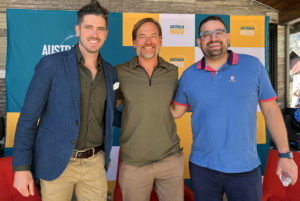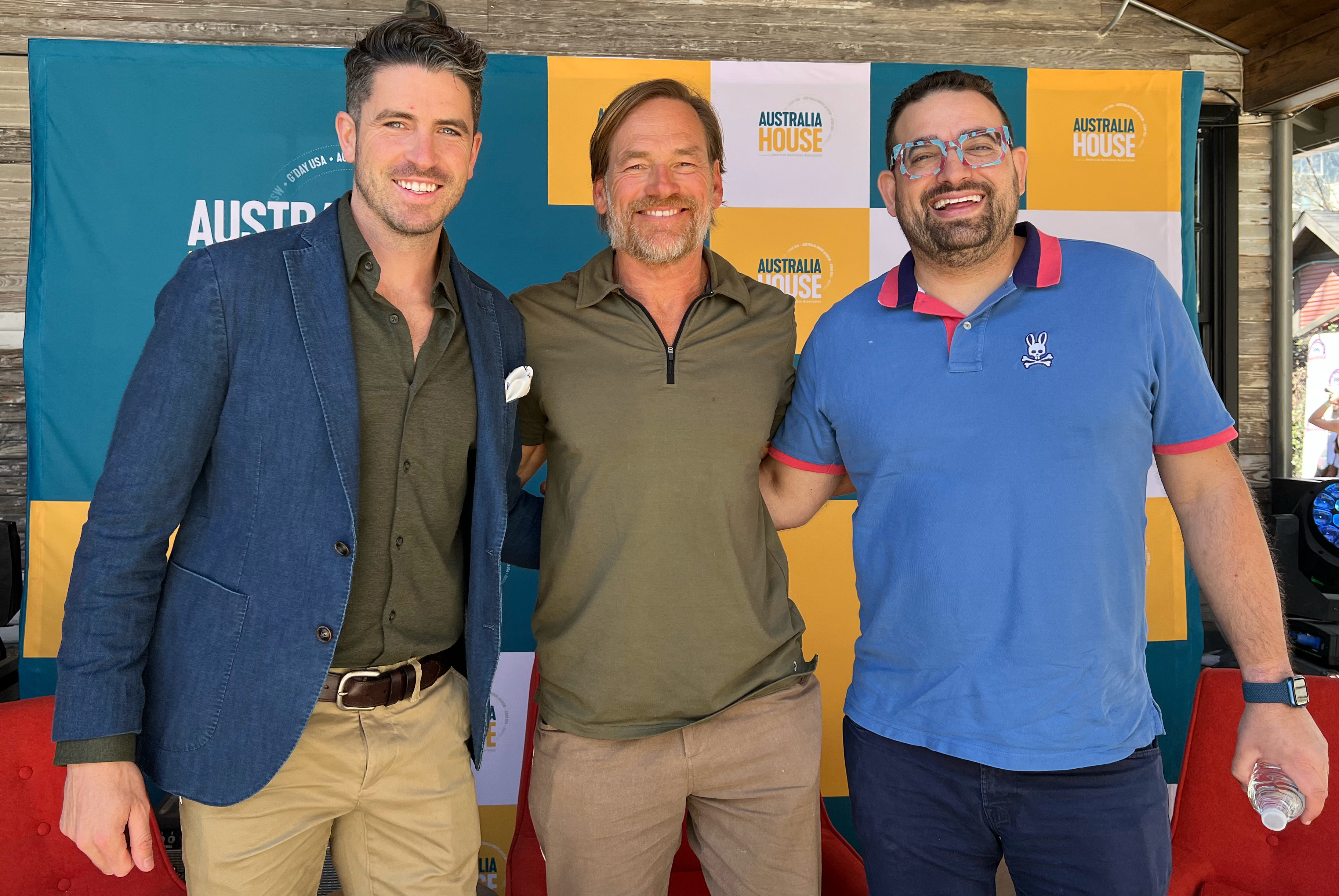The second season of Netflix’s Down to Earth was featured at SXSW. Even though SXSW decided not to include it in the schedule, I found it just for the readers of SunNewsAustin!
Since the university I’m affiliated with is in Australia, I hung out at Australia House for an afternoon, away from the mad rush at the convention centre. The bar Lucille’s on Rainey Street was taken over by the Aussies during SXSW, and renamed Australia House (I’ll be reporting on another SXSW event there soon). Ice cream made with mango from Australia was just one of the free treats available to the lucky few who found this venue.
Down to Earth features actor Zac Efron and natural food guru Darin Olien as co-hosts. Olien was here with the show’s producer Michael Simkin; they were interviewed by the uber handsome Australian TV presenter Scott Tweedie.
Olien said being able to spend time with the Aborigines was “the most impactful. Even our first day of filming was just straight-up ceremony. Just really feeling them – being connected as they are to the land – that was the biggest impression on me. Throughout the series we did everything we could to understand them and follow the culture in the best way possible and honour them. Every time we would go into a new part of the land we would meet a whole new mob, as they call it.” Simkin enjoyed the food most: “literally I put on 30 pounds there.”
They met several innovators through their trek in Australia, people trying to make it a better place. “Any one of these things you will see in the series is extraordinary in its application to the world.” Olien said. “Australia became this beautiful 8-episode incubator. If you can create change on an island, you can change any part of the world.”
They visited a part of Australia hardly ever visited by tourists – the Torres Strait Islands off the northern tip of the Australian landmass. Simkin said he “was shocked that a lot of Australians did not know that they are a second indigenous people of Australia.” The presence of different people on the land over thousands of years is something that has not been forgotten there.
“There’s an acknowledgement and knowledge of who was there before. We don’t have that here in the United States but it’s a very important thing for us to know. Not only out of respect but also because there’s a lot of knowledge that you get from living off the land. That kind of openness to science from indigenous people but also them bringing their own experience, as well as citizen science, is incredibly valuable for scientists.”
Tweedie asked about the Great Barrier Reef. Olien said “to be in the water and literally see the scientists was amazing. For example, taking coral that has broken off and is not quite dead yet, and then creating mechanisms to allow the coral to regrow on the reefs itself. If the GBR is destroyed, it can destroy the whole continent and have a devastating impact on the globe. For me, going in there, it’s as if you’re visiting the rainforest of the ocean. When you can look at something the size of a dime and see a whole world, I don’t think there’s a human on the planet who doesn’t care more when you actually see life.”
Going back to what Michael was saying, Olien mused about the value of Aboriginal culture. “We got to be a fly on the wall of 60,000 years of Aboriginal knowledge sitting with scientists on and in the GBR. They were doing their work together to take in knowledge and apply it scientifically to something that is a wonder of the world.”
It is not just us North Americans who will find the TV show an eye-opener. Tweedie said “I think we’re all going to learn so much from this series from both the conservation point of view but also the indigenous point of view. Being Australian myself I can’t wait to see what you saw. There will be things none of us have ever heard of or seen. As you said from different mobs around the country, they’ve got different ways and techniques of doing things.”
Netflix’s Down To Earth: Learning Sustainable Tourism from Australia will return for its second season in June 2022.
Photo by C. Cunningham, copyright SunNewsAustin
l to r: Tweedie, Olien, Simkin
